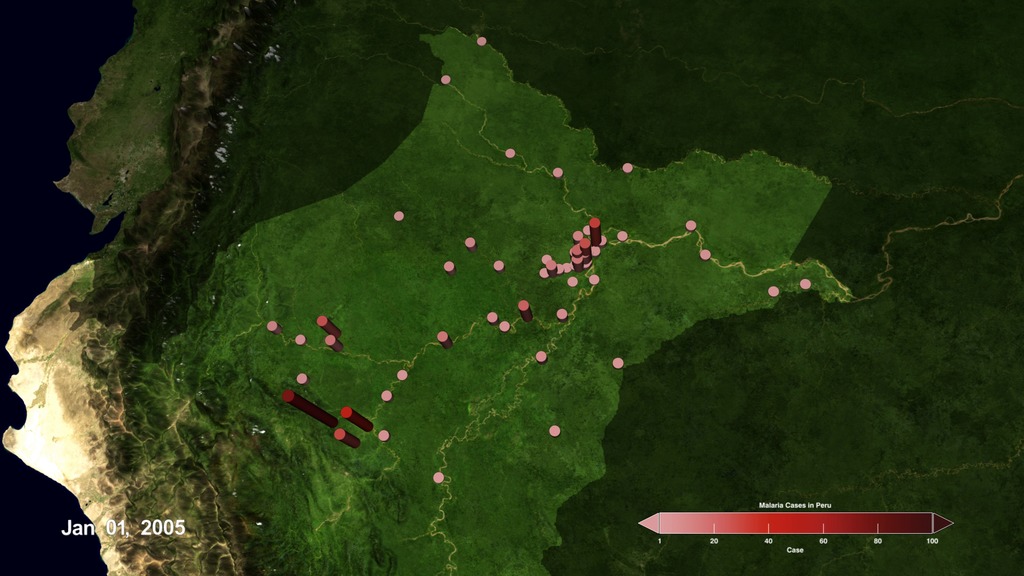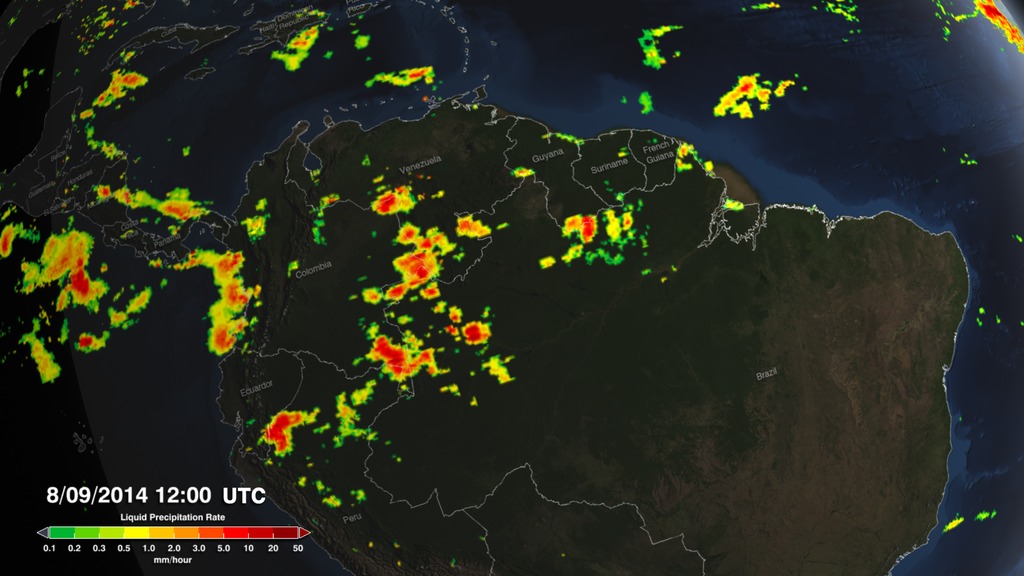Predicting Malaria Outbreaks With NASA Satellites
In the Amazon Rainforest, few animals are as dangerous to humans as mosquitos that transmit malaria. The tropical disease can bring on severe fever, headaches and chills and is particularly severe for children and the elderly and can cause complications for pregnant women. In rainforest-covered Peru the number of malaria cases has spiked such that, in the past five years, it has had on average the second highest rate in the South American continent. In 2014 and 2015 there were 65,000 reported cases in the country.
Containing malaria outbreaks is challenging because it is difficult to figure out where people are contracting the disease. As a result, resources such as insecticide-treated bed nets and indoor sprays are often deployed to areas where few people are getting infected, allowing the outbreak to grow.
To tackle this problem, university researchers have turned to data from NASA’s fleet of Earth-observing satellites, which are able to track the types of human and environmental events that typically precede an outbreak. With funding from NASA’s Applied Sciences Program, they are working in partnership with the Peruvian government to develop a system that uses satellite and other data to help forecast outbreaks at the household level months in advance and prevent outbreaks.
Additional imagery from:
Christopher B. Plunkett Fort
James Gathany
Fábio Medeiros da Costa
Complete transcript available.
Music credits: ‘Inner Confusion’ by Laurent Levesque [SACEM], ‘The Awakening’ by Benjamin Krause [GEMA], Scott Goodman [ASCAP], ‘Cellular Signals’ by Laurent Levesque [SACEM]
Watch this video on the NASA Goddard YouTube channel.

Scientists are using NASA's Earth-observing satellites to better understand how the environment affects where and when malaria outbreaks occur. A GIF optimized for posting on Twitter.

NASA satellites measure precipitation and other environmental conditions that can give clues to where mosquito breeding sites are likely to form. A GIF optimized for posting on Twitter.

There are roughly 40 malaria-transmitting mosquitoes worldwide. Anopheles darlingi mosquitoes are most responsible for spreading malaria in the Peruvian Amazon. A GIF optimized for posting on Twitter.
For More Information
Credits
Please give credit for this item to:
NASA's Goddard Space Flight Center
-
Scientists
- William Pan
- Ben Zaitchik (Johns Hopkins University)
-
Producer
- Joy Ng (USRA)
-
Data visualizer
- Cheng Zhang (USRA)
-
Writer
- Samson K. Reiny (Wyle Information Systems)
-
Support
- Greg Shirah (NASA/GSFC)
- Horace Mitchell (NASA/GSFC)
- Ryan Fitzgibbons (USRA)
- Dalia B Kirschbaum (NASA/GSFC)
Series
This page can be found in the following series:Release date
This page was originally published on Wednesday, September 13, 2017.
This page was last updated on Wednesday, May 3, 2023 at 1:47 PM EDT.

